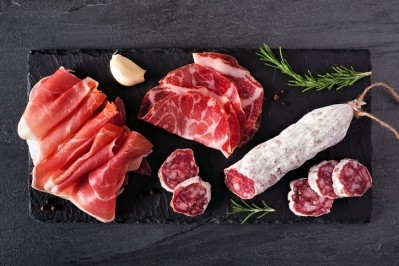Making ‘healthier’ meat: Consumer attitudes to better-for-you burgers and bangers

For all the publicity given to plant-based protein options, the European market for processed meat products remains both large and buoyant.
On a global scale, UN data suggests per capita meat consumption totals around 43kg of meat, an increase of around 20kg since 1961. In Europe the average is considerably higher, at nearly 80kg per person.
And demand continues to rise. Market forecasters at Mordor Intelligence predict that meat sales in the region will increase by a compound annual growth rate of 3.2% through to 2023.
High meat consumption has been associated with various negative health outcomes. Such products are often high in salt and fat, overconsumption of which is linked to cardiovascular disease and obesity.
According to Cancer Research UK, processed meat is also a risk factor in cancer. “It’s the chemicals that are either found in the meat, added during processing or produced when cooking that are thought to increase the risk of cancer by damaging our cells,” the cancer charity explained pointing to haem, nitrates, HCAs and PCAs as areas of concern.
But it doesn’t have to be that way. “It is now possible to manufacture healthier meat products, products with lower fat, salt and added beneficial compounds such as fibre or omega 3s,” Dr Simona Grasso told FoodNavigator.
“A large proportion of the meat regularly consumed is in the form of processed meat. Consumers like processed meats because they are convenient, cheap and tasty and they are likely to remain a staple food in the diet of many consumers. For health reasons, in the last decade there has been increased interest to develop meat products with lower amounts of unhealthy compounds such as salt, saturated fats and additives.”
If healthier options are possible, why haven’t we seen widespread market uptake? One potential barrier is consumer attitudes and expectations. “We do not really know what consumers may think of such products,” Dr Grasso explained.
Dr Grasso is a senior research fellow at the University of Reading. She is leading an EIT Food-backed project to assess consumer attitudes towards healthier processed meat products.
Unlocking innovation opportunities
The research, funded by EIt, brings together experts from the University of Reading and ABP in the UK, Aarhus University in Denmark and the Spanish National Research Council in Spain.
The study is focused on these countries because of the high meat consumption levels evident. “These countries have high meat consumption rates, above 80kgs per person per year, so we felt it was important to start with these ones,” Dr Grasso explained.
It has already organised co-creation workshops and focus groups with consumers to gauge different attitudes and approaches to the ‘ideal healthier meat product’.
“When we refer to a healthier meat product, we refer to a product where some unhealthy compounds such as fats and salt have been reduced or eliminated. It is also possible at the same time to introduce healthier compounds (mainly plant-based), such as fibre or omega 3 fats,” the UK-based scientist told this publication.
“We started with co-creation focus groups in the three countries, to get ideas from people on their preferred healthier meat products. We provided participants with selected base meat products such as sausages, meatballs, burgers and chicken nuggets, as well as a range of possible modifications.”
Some clear opportunities have already emerged. Firstly, Dr Grasso noted, there is an important opportunity around products that already contain ground meat. “The more finely comminuted (i.e. finely minced) the meat product is, the easier it is to introduce healthier modifications, while for whole products such as a whole ham leg or bacon, it is more difficult to make changes,” she explained.
In this context, the researchers found consumers were commonly open to the idea of hybrid products, mixing both animal- and plant-based proteins.
“A hybrid burger might be more acceptable than a plant-based one for a person who is used to eating a lot of meat products. If they jumped straight to plant-based meat alternatives, Quorn-like products or tofu, they might miss the taste and texture of meat too much and possibly be put off by the idea of changing diet completely.”
The nutritional profile of ‘healthier’ processed meat products needs to be considered at each stage of the product development process. This means stripping the meat product back to basics, removing unhealthy additives.
“In terms of the nutritional composition, the idea when making healthier meat products is always to start for a base that is as clean as possible. There would not be much point in adding one beneficial ingredient to a meat product that has a lot of negative ones, so we strip the meat product back to basics and only add the essential,” Dr Grasso explained.
Hybrid NPD to compete with ‘cool image’ of plant-based
Dr Grasso believes that innovation around healthier processed meats presents food makers with a significant commercial opportunity.
Particularly looking to hybrid products, she believes that they should be viewed as a response to growing demand from so-called flexitarian consumers who want to reduce the amount of animal protein in their diets.
“It is important for these options to be in the market because in a way they take the guilt away from processed meat consumption. There are many flexitarians who are reducing their meat and processed meat intakes for health, environmental or ethical reasons, so when they consume meat products they might look for the healthier version available,” she observed.
The potential has not gone un-noticed by meat processors and Dr Grasso said she has already witnessed an up-tick in innovation.
This could be necessary as a fresh wave of next-generation plant-based innovation that tastes, smells and cooks like meat hits the market. Indeed, Dr Grasso observed, meat innovators could well look to hybrid products as an answer to the ‘cool’ image that plant-based products have cultivated.
“The meat product space is going to change a lot if it wants to be part of the flexitarian trend and compete with the fresh, young and cool image that plant-based foods are developing. Waitrose, for example, has very recently become the first supermarket to reduce its nitrates across its complete own-label bacon and gammon.
“Waitrose [also] started a range of meat products with plant-based ingredients a few years ago and they are still on the shelves. Then Sainsbury’s and Tesco followed. The latest range is from M&S, who have launched a “hidden veggies” range where a serving of meat product such as a burger gives you one of your five a day. How cool is that? The vegetables in these products help with flavour, juiciness and taste so they might appeal to a lot of people.”
The next phase of the project will see researchers launch larger-scale consumer outreach to further test the concepts developed during the focus groups. “We are planning a survey with 1000 participants in each country and we are going to understand people’s preferences for meat products made with plant-based ingredients, figuring out the preferred meat product, the preferred base meat, types of plant-based ingredients to use, etc. Then we will continue with price, giving people different information about the products and understand which one is the best one to use.”






















